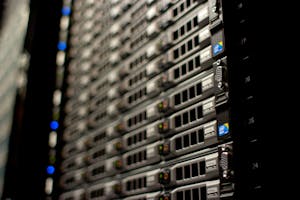If you’re considering a virtual desktop solution, you have two main choices. Either you’ll use a hosted desktop or a cloud desktop.
A hosted desktop utilizes virtual desktop infrastructure (VDI). This is the practice of hosting a desktop within a virtual machine that runs on a centralized server.
A cloud desktop is a virtual desktop hosted on the cloud. DaaS, or desktop as a service, is another term used to describe a cloud desktop solution.
The primary distinction between the two is the hosting of the virtual desktop. Carefully consider the strengths and weaknesses of each option. This will allow you to make the best choice for your business.
Virtual Desktop Infrastructure: Pros and Cons

With VDI, servers are typically located on-site. This can make security-minded business owners more comfortable. They will have full control over their hardware, software, and data.
For some businesses, data security is of the utmost concern. And for others, the protection of data may even be subject to government regulations.
However, the onsite management of VDI technology is a specialty field. Each machine’s applications, permissions, security, and collaboration will need to be managed. And those labor-intensive tasks will fall on the IT department.
Implementing VDI requires a significant investment in server hardware. And additional expenditures may be required for storage and network infrastructure.
Therefore, the total cost of VDI implementation can actually be higher than expected. It can surpass the cost of purchasing a new PC for each user on a traditional local network.
In addition, using VDI can be cumbersome for end users. They have to manage two desktops and two taskbars. One set shows the user what files are open when working online. And the other set shows what files are open locally.
Swapping between sets to locate and access everything can be frustrating and inefficient.
Regarding accessibility, VDI is limited in its adaptability to mobile devices. For example, VDI does not display well on mobile devices due to image display distortion. And remote access is further compromised by VDI’s inability to adapt to new technologies.
Desktop as a Service: Pros and Cons

The best feature of DaaS is that you can access your desktop anytime, anywhere. A DaaS system allows a user to access their work desktop virtually. All they need is an internet connection.
DaaS is also generally more compatible with mobile devices and tablets than a VDI system.
The remote access enabled by DaaS increases the productivity of users who are out of the office. However, internet or network connectivity issues can undermine productivity.
A DaaS setup helps you to monitor security and reduce maintenance costs. Upgrades and maintenance can be done through one central point.
Because DaaS reduces infrastructure responsibilities, cost savings can be significant. And savings are not limited to hardware. DaaS eliminates the need to purchase multiple licenses for users with multiple devices.
In addition, DaaS offers the opportunity for better spending and budget controls. Cloud desktop solution services are bundled and billed as a monthly subscription fee.
Unlike VDI, DaaS has built-in end-user functionality. DaaS empowers end users to…
- + manage user accounts
- + create company directories
- + control applications
- + run administrative tools
- + add gadgets to the desktop
For a rapidly growing business, DaaS can establish a new workstation in minutes. No new hardware purchases are necessary, and system setup is minimal.
In this regard, DaaS offers maximum scalability. It’s an ideal choice for startups, rapidly growing businesses, and seasonal enterprises.
Most IT departments consider DaaS simple to oversee and manage. This is because the bulk of network oversight responsibilities are outsourced.
DaaS allows IT managers to focus on business growth strategies instead of troubleshooting. And it has security benefits, too. Offsite data storage can strengthen business continuity and disaster-recovery capabilities.
Choosing the Best Virtual Desktop Solution for Your Business
DaaS is a comprehensive virtual desktop solution. It offers more flexibility, customization, and cost savings than VDI.
Choosing a trustworthy company to host your cloud desktop is critical for security. Your cloud provider will be responsible for storing and safeguarding your data.
Does your business have special data security needs? Is your business subject to data-storage regulations? If so, you should choose an IT provider with experience and a proven reputation in your field.
Streamline IT functions and take advantage of what cloud computing has to offer. Contact ITSG today to get started.
